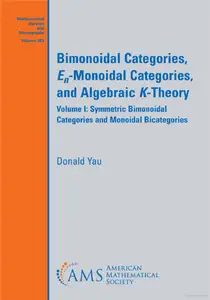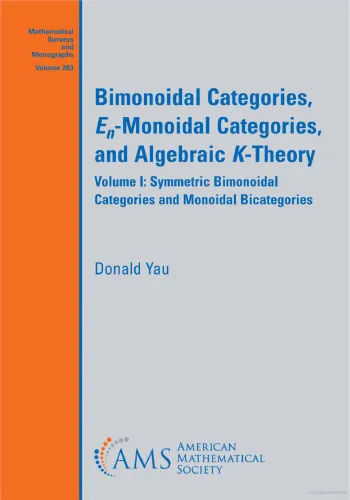Bimonoidal Categories, 𝐸_{𝑛}-Monoidal Categories, and Algebraic 𝐾-Theory Volume I: Symmetric Bimonoidal Categories and Monoidal Bicategories
Donald Yau
English | 2024 | ISBN: 1470478099 | 551 Pages | PDF | 13.4 MB
Donald Yau
English | 2024 | ISBN: 1470478099 | 551 Pages | PDF | 13.4 MB
Bimonoidal categories are categorical analogues of rings without additive inverses. They have been actively studied in category theory, homotopy theory, and algebraic $K$-theory since around 1970. There is an abundance of new applications and questions of bimonoidal categories in mathematics and other sciences. The three books published by the AMS in the Mathematical Surveys and Monographs series under the general title Bimonoidal Categories, $E_n$-Monoidal Categories, and Algebraic $K$-Theory (Volume I: Symmetric Bimonoidal Categories and Monoidal Bicategories-this book, Volume II: Braided Bimonoidal Categories with Applications, and Volume III: From Categories to Structured Ring Spectra) provide a unified treatment of bimonoidal and higher ring-like categories, their connection with algebraic $K$-theory and homotopy theory, and applications to quantum groups and topological quantum computation. With ample background material, extensive coverage, detailed presentation of both well-known and new theorems, and a list of open questions, this work is a user-friendly resource for beginners and experts alike.
Part 1 of this book proves in detail Laplaza's two coherence theorems and May's strictification theorem of symmetric bimonoidal categories, as well as their bimonoidal analogues. This part includes detailed corrections to several inaccurate statements and proofs found in the literature. Part 2 proves Baez's Conjecture on the existence of a bi-initial object in a 2-category of symmetric bimonoidal categories. The next main theorem states that a matrix construction, involving the matrix product and the matrix tensor product, sends a symmetric bimonoidal category with invertible distributivity morphisms to a symmetric monoidal bicategory, with no strict structure morphisms in general.



